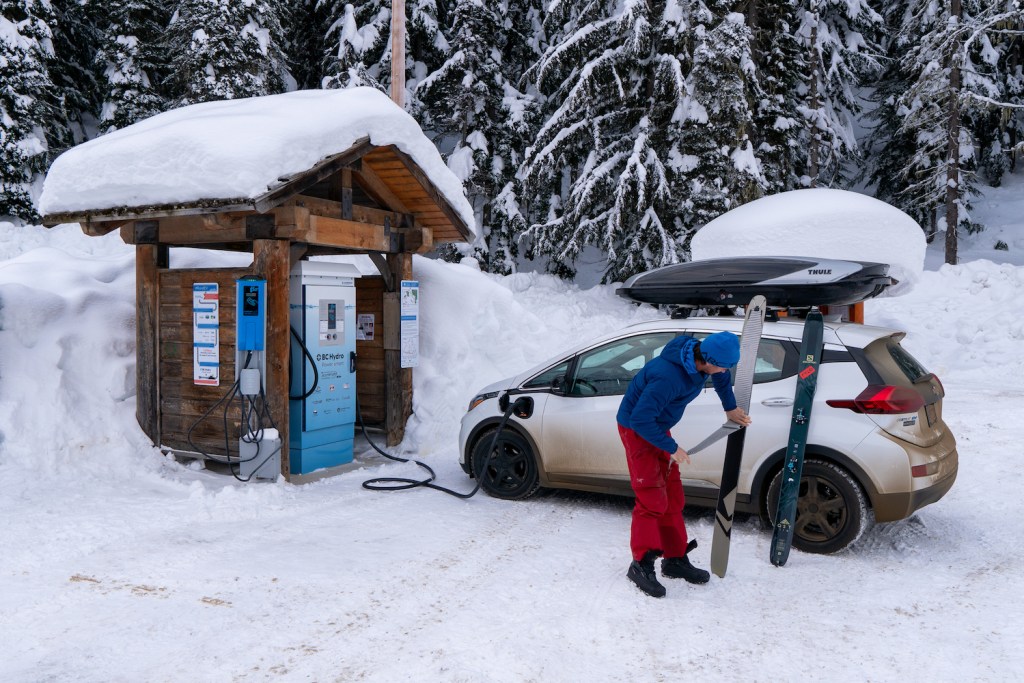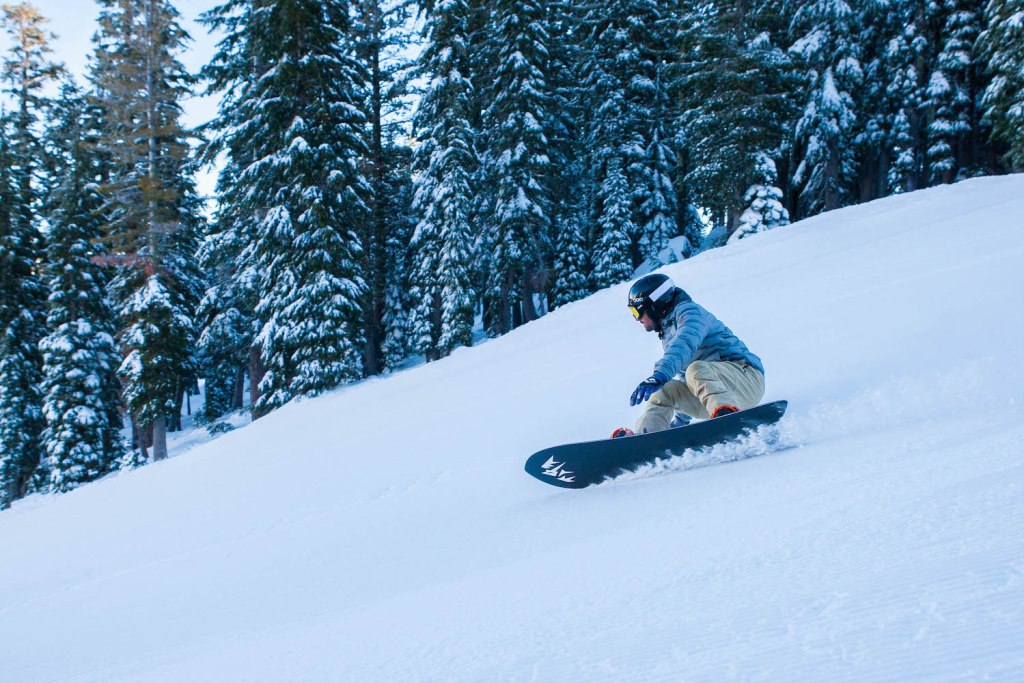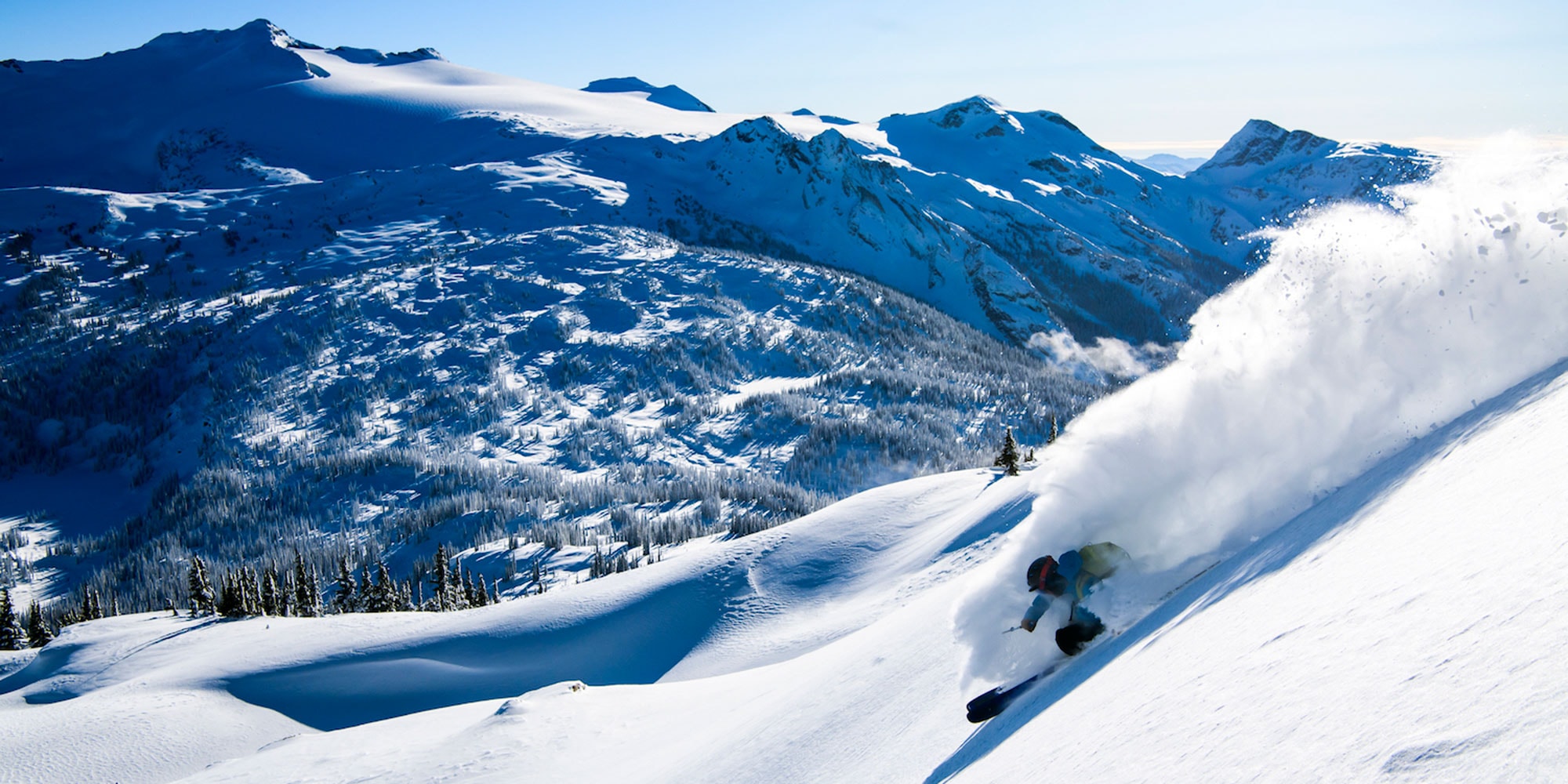There’s no getting around it—skiing and snowboarding can be high-impact activities. Between the energy required to operate large ski resorts to the impact of air travel and driving to the mountains, those winter ski trips and dreamy lift-accessed powder turns have consequences.
Climate change threatens the ski industry in a big way, and many professional snowsports athletes are speaking out to encourage lower-impact habits to help reduce the massive consumption from skiing and snowboarding. What can we learn from them? Professional snowboarder Jeremy Jones founded the climate advocacy nonprofit Protect Our Winters (POW) in 2007 and has given up helicopters and far-flung trips for human-powered riding closer to home, ski mountaineer Greg Hill has taken on the challenge of skiing 100 summits from an electric car, skier Chris Rubens has made big lifestyle changes to cut his carbon footprint and Amie Engerbretson is one of many pro skiers who travel to Washington, D.C., with POW to advocate for climate action.
We asked Rubens, Hill, Jones and Engerbretson for advice on how you can reduce your impact while still getting after it. “It doesn’t mean we need to stay home, feel guilty and not ski,” said Rubens. “Starting to make changes in our daily lives can really add up, and that’s what we need to encourage each other to do.”

Pro skier Chris Rubens says he limits his travel to two flights per year now. (Photo Credit: Bruno Long)
Change your travel habits
A recent U.N. report found that by 2050, airline travel could consume 12 percent or more of the global carbon budget (the emissions limit to keep the global temperature rise below 1.5 degrees Celsius.) Fly round-trip across the U.S. a single time and that’s roughly a quarter of the greenhouse gasses your car puts out in a whole year. You don’t have to cross international ski trips off your list indefinitely, but consider trading a few flights for road trips this winter.
After filming Guilt Trip with Salomon in 2016, Rubens was determined to take a look at his carbon footprint and make some positive changes. “I took 26 flights that year,” he recalled. Now Rubens limits himself to two flights a year—one for an annual Salomon meeting in Europe and one for when a unique opportunity presents itself.
Before embarking on his Electric Adventures, Greg Hill owned an gas-guzzling truck and a snowmobile, which he frequently drove 45 minutes up to Rogers Pass all by himself. “I realized, something is off with this. But it took me a while to figure out a solution,” Hill said. For a while he tried riding his bike to all of his approaches, but it didn’t feel sustainable, especially if he wanted his ski partners to stick around. “Finally the electric cars came out and that’s where it all began,” he added. Hill is now committed to a fossil fuel-free ski career, traveling only to places he can reach by electric vehicle.
If you drive up to the mountain, try to set up a carpool system with your ski partners or see if your local hill offers public transport. If you’re on a ski trip in say, Salt Lake City, you can take a bus up Little and Big Cottonwood Canyons to Brighton, Solitude, Alta or Snowbird. If you’re visiting Jackson Hole, Wyoming, you can hop on the START Bus in town and catch a ride to the front of the tram.

Ski mountaineer Greg Hill gets to the trailhead thanks to his electric car. (Photo Courtesy of Salomon)
Earn your turns
Instead of hitting the resort every weekend, switch things up with a few days in the backcountry. (Be sure to get outfitted and educated in avalanche awareness and backcountry safety before you go.) You don’t have to ski two million feet like Greg Hill, but a little uphill action is good for the soul and will help you slow down and appreciate the mountains in a different way. “Even at the top of a run with crappy snow conditions, earning those turns helps you appreciate the environment, the exercise and the people you’re with,” said Rubens.
Make conscious purchases
As a consumer, you have a voice in what brands produce and sell. Supporting companies that actively offset their carbon emissions or seek to lessen their impact with the processes they use and the products they make is a great way to encourage positive change in the ski and outdoor industries. Big companies like Patagonia are raising the bar for corporate responsibility throughout their entire supply chain, and small brands like Tentree—which plants 10 trees for every garment sold—are taking unique approaches to sustainability. REI has established sustainability standards for every product sold at the co-op.
Buying used gear or renting skis or snowboards is another thoughtful choice, as it’s considered a way to help lengthen the lifespan of an item.
“Sure, I can make all these changes in my everyday life and yes, they’re great. But big corporations have way more of an influence,” said Hill. “If enough people are buying something, companies will respond.”

Snowboarder Jeremy Jones founded a whole nonprofit organization dedicated to climate change. (Photo Courtesy of Protect Our Winters)
Become a climate advocate
Getting involved in policy changes is another effective step you can take as an individual. “It’s important to reduce our individual impact, but we’re a product of a society run by burning fossil fuels. We also need to work to initiate change at a higher level,” said Jones, who travels to Washington, D.C., each year to meet with representatives about climate change.
“It’s easy to sit back and think, well, I can’t do anything about it, or, I don’t know anything about politics,” said Engerbretson. “But as intimidating as it can be, those elected officials behind desks in D.C. are people too.”
Being a climate advocate doesn’t mean you have to travel all the way to Capitol Hill. Don’t underestimate the power of a phone call or email to your local representative. Protect Our Winters has resources to educate you on ongoing initiatives, and how you can reach out to representatives. They even offer pre-written emails you can send to your policy makers through just a few clicks on their site.
“It really opened up my eyes to how much power we have as individuals and as a community,” said Engerbretson of her work with POW.
Embrace progress, not perfection
Start making changes, but don’t expect perfection. “I was scared to speak out at first because I didn’t want to be labeled a hypocrite,” said Engerbretson. “But I learned I didn’t have to be perfect to make positive change. I don’t have to give up everything that’s important to me to make a difference.”
Rubens believes that trying to cut habits out completely can be daunting and intimidating. “We can’t vilify people for what they aren’t doing,” said Rubens. “That’s not going to get us anywhere. But making changes starts to put a positive spin on everything and can be really empowering.”
Pick a few ways you feel you can make a positive impact—like buying used gear or carpooling with friends—and slowly build up from there. “It’s kind of like approaching a big mountain for the first time,” said Rubens about adopting a more environmentally-conscious lifestyle. “At first it looks huge and impossible to climb, but we chip away and chip away and eventually we get closer.”


